Will someone read your letters 3500 years from now?
fev 28 2023By Marcos Chiquetto

In a cave in Lascaux, France, there are beautiful paintings representing animals. Archaeologists who have dated these paintings say they are 15,000 to 17,000 years old.
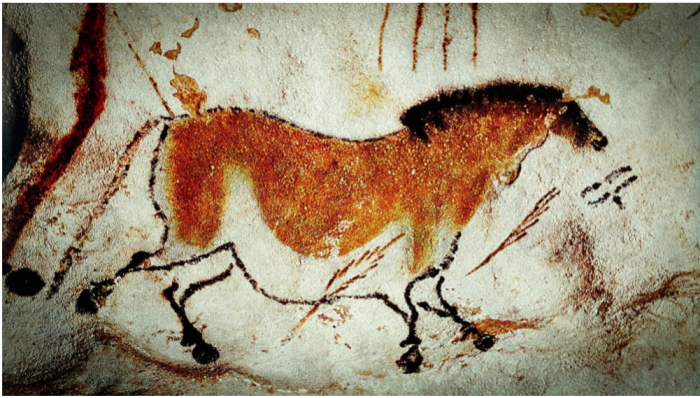
Given that a generation for the human race is considered to be 20 years, these paintings were done more than 750 generations ago. Imagine a line of 750 successive families over the centuries, and those paintings enduring all this time, preserved in that cave.
In 2010, Israeli archaeologists found the oldest fragment of cuneiform script ever discovered, dated at 3,700 years.
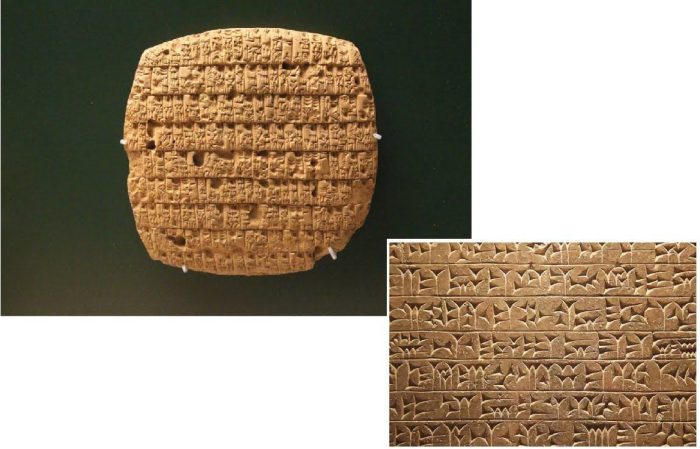
Have you ever thought about this? Over 3500 years ago, or some 170 generations in the past, someone created a written document in clay, using cuneiform script, and this writing has survived until today! It was simply laying there, unseen, until it was discovered thousands of years later.
Another type of record that was created ages ago is writing on papyrus, done with ink, which was widely used in ancient Egypt. There are papyrus writings done three thousand years ago that are still legible today.

More recently, in the Middle Ages, a period that extends from approximately 1500 years ago until 700 years ago, catholic monks wrote sophisticated texts with beautiful illustrations on parchment, a leather-based material. Many of these medieval scrolls are still with us today. A parchment scroll written 1000 years ago was made 50 generations ago. And it may still be legible today!
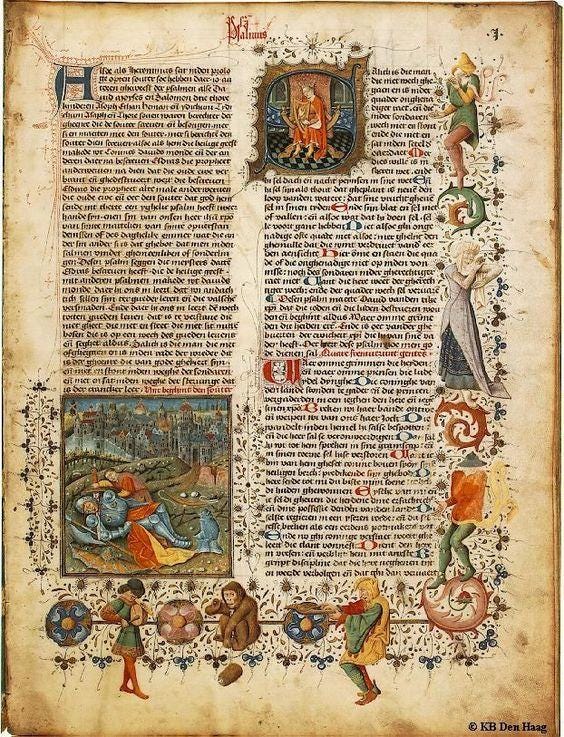
Meanwhile, texts printed on paper emerged in Europe in the XV century, approximately 600 years ago, or 30 generations.

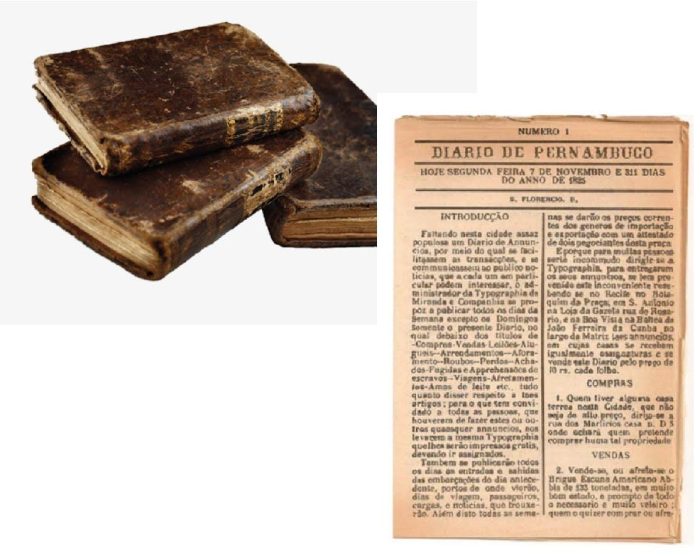
And after printing on paper, what was the next technology used for recording documents?
It was electronic files of text or images that could be stored on optical media like the CD.
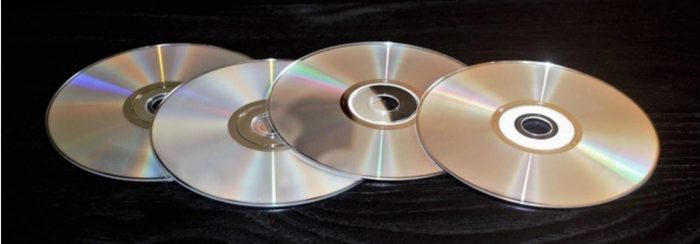
And what is the useful life of a recorded CD? Well, according to manufacturers, the useful life of the most basic CDs after having information recorded on them is 50 years, and the useful life of a higher quality CDs is 200 years. No one has tested this yet in practice because it is impossible to speed up time in a laboratory, but there are robust mathematical models that can simulate long durations of time, so this estimate of useful life is considered to be reliable. Accepting this figure as true, the majority of recorded CDs we now have will no longer be readable 50 years from now.
Compare the useful life of various types of media mentioned here:
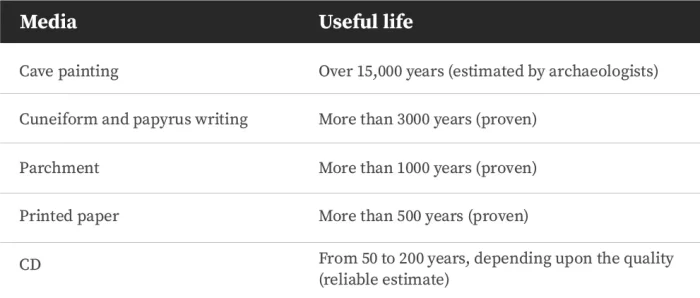
But we hardly use CDs anymore. Many texts are simply recorded on hard discs or SSD units in notebooks. These devices have a useful life of less than 10 years, meaning that a scientific article that was only recorded on a notebook will probably be lost in 10 years.

− But these days we don’t record only on notebooks. Files are stored in a cloud, which makes them secure.
Yep. This is true.
But what is a cloud?
For us, users, it is a mysterious place where our files are stored in a way we don’t really understand. But, in practice, the hardware of a cloud is nothing more than a large system of computer servers that operate 24 hours a day, and store users’ files.

These servers are extremely complex machines that depend on a continuous supply of power to remain on, a powerful system of refrigeration to stay operational, and a global communications system to receive and transmit information. If any one of these support systems is not operating within its specifications, the servers will simply not function.
What is more, a server also has a short useful life of approximately 10 years, and the technology of these servers changes over a period of 10 to 20 years. This means that their entire content has to migrate from one machine to another at least once every 20 years.
Have you ever considered this? Currently, almost the entire body of scientific knowledge, all journalistic content, school curricula, every message exchanged between people, every contract, all music, and almost all other forms of knowledge and art are stored in extremely delicate and complex machines that have a maximum life of 20 years. That means that this entire mass of information has to be carefully passed from older servers to new ones at least once during every human generation.
In addition, this content is stored on magnetic discs that may be affected by intense variations in magnetic fields. An intense solar storm, like the one that happened in 1859, is capable of damaging the content of magnetic discs.

And can a document last for 3500 years, like the cuneiform writing mentioned in this article? The only way is for it to be migrated a minimum of 750 times from one server to another, without any error. And counting on the fact that none of these 750 servers is ever affected by a solar storm or a bomb attack.
Of course, all the content in clouds is backed up with copies in other locations, but everything that has been said about this system of storage goes for the machines used for backup as well.
The fact is, as opposed to traditional written records, documents stored with our current technology are not passively preserved. If you leave your computer file there untouched, it will not be preserved by itself. Constant intervention that is both complex and expensive is required in order to ensure that the documents are preserved.
And this strikes me as highly disturbing!

Marcos Chiquetto is an engineer, Physics teacher, translator, and writer. He is the director of LatinLanguages, a Brazilian translation agency specialized in providing multilingual companies with translation into Portuguese and Spanish.




